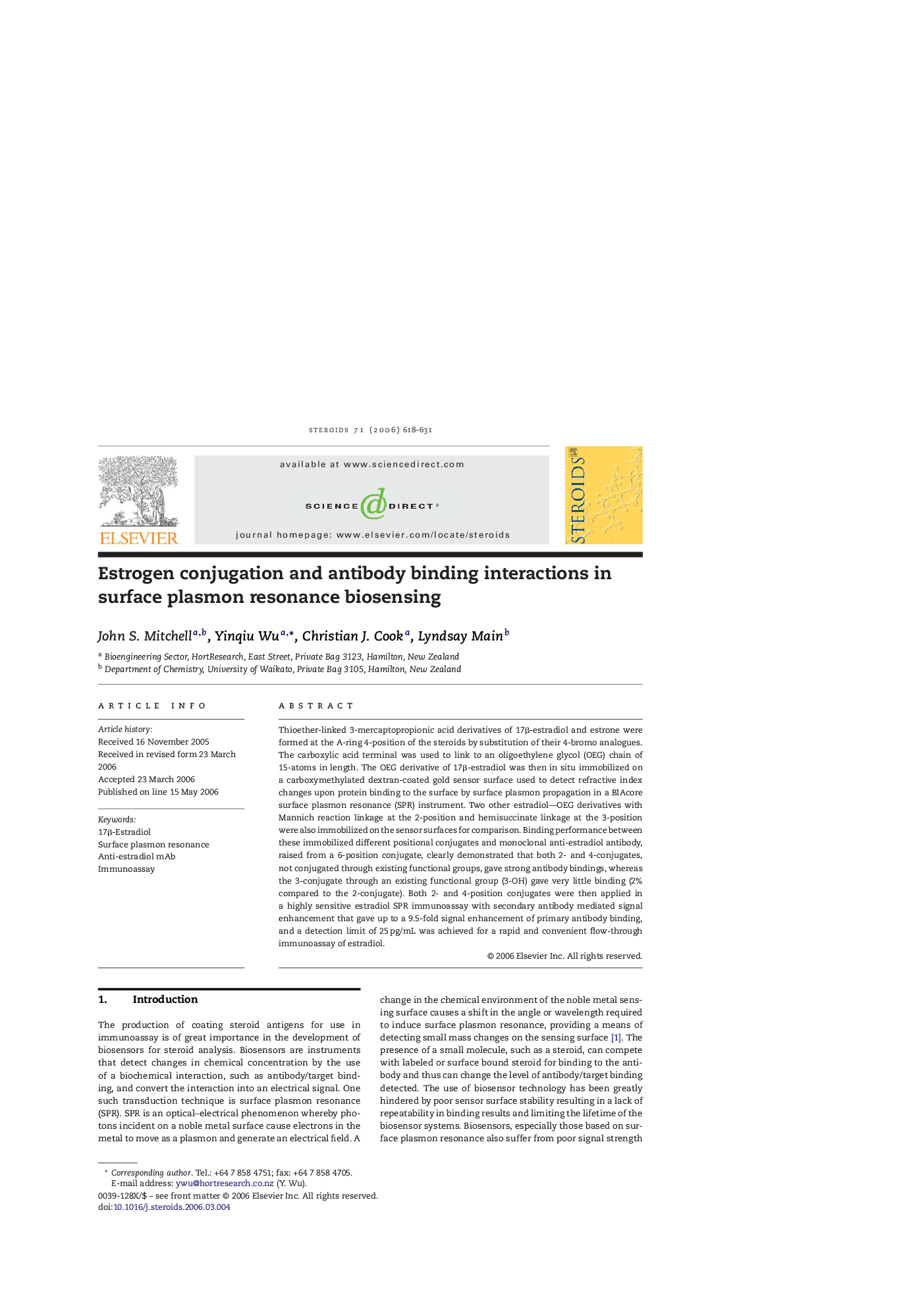| کد مقاله | کد نشریه | سال انتشار | مقاله انگلیسی | نسخه تمام متن |
|---|---|---|---|---|
| 2029008 | 1070461 | 2006 | 14 صفحه PDF | دانلود رایگان |

Thioether-linked 3-mercaptopropionic acid derivatives of 17β-estradiol and estrone were formed at the A-ring 4-position of the steroids by substitution of their 4-bromo analogues. The carboxylic acid terminal was used to link to an oligoethylene glycol (OEG) chain of 15-atoms in length. The OEG derivative of 17β-estradiol was then in situ immobilized on a carboxymethylated dextran-coated gold sensor surface used to detect refractive index changes upon protein binding to the surface by surface plasmon propagation in a BIAcore surface plasmon resonance (SPR) instrument. Two other estradiol—OEG derivatives with Mannich reaction linkage at the 2-position and hemisuccinate linkage at the 3-position were also immobilized on the sensor surfaces for comparison. Binding performance between these immobilized different positional conjugates and monoclonal anti-estradiol antibody, raised from a 6-position conjugate, clearly demonstrated that both 2- and 4-conjugates, not conjugated through existing functional groups, gave strong antibody bindings, whereas the 3-conjugate through an existing functional group (3-OH) gave very little binding (2% compared to the 2-conjugate). Both 2- and 4-position conjugates were then applied in a highly sensitive estradiol SPR immunoassay with secondary antibody mediated signal enhancement that gave up to a 9.5-fold signal enhancement of primary antibody binding, and a detection limit of 25 pg/mL was achieved for a rapid and convenient flow-through immunoassay of estradiol.
Journal: Steroids - Volume 71, Issue 7, July 2006, Pages 618–631